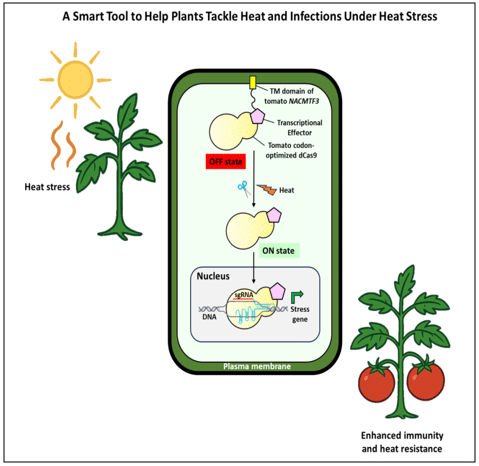Introduction of New CRISPR Technology

A groundbreaking molecular tool developed by researchers at Bose Institute offers a promising solution for plants grappling with the challenges of rising temperatures and infections. This innovative approach leverages a modified version of the CRISPR technology, enabling plants to enhance their defense mechanisms when faced with stress. The findings, published in the International Journal of Biological Macromolecules, could significantly improve the resilience of various crops, particularly solanaceous plants like tomatoes and potatoes.
Understanding Plant Stress and CRISPR Technology
Plants often experience stress due to extreme weather conditions or microbial attacks, which can lead to decreased productivity. To combat these challenges, scientists have turned to CRISPR (Clustered Regularly Interspaced Short Palindromic Repeats), a powerful tool that can modify DNA. However, the researchers from Bose Institute, led by Professor Pallob Kundu, employed a modified version known as dCas9. Unlike traditional CRISPR, which cuts DNA, dCas9 acts as a switch that can turn genes on or off without making cuts. This switch remains inactive until the plant encounters stress, allowing for a targeted response.
The researchers incorporated a unique element from tomato biology—a small protein segment called NACMTF3. This segment, specifically the TM domain, functions as a tether that keeps the dCas9 switch outside the plant’s nucleus. Under stress conditions, such as high temperatures, the TM domain releases its grip, allowing the switch to enter the nucleus and activate genes that bolster the plant’s defenses.
Testing the Smart Molecular Tool
The effectiveness of this smart molecular tool was tested on tomatoes, potatoes, and tobacco. The results were particularly promising for tomatoes facing the bacterial pathogen *Pseudomonas syringae*, which poses a heightened threat during heat waves. Typically, extreme heat compromises a plant’s immune system, increasing vulnerability to infections. However, the researchers successfully activated two critical defense genes, CBP60g and SARD1, precisely when the plants needed them most, enabling the tomatoes to mount an effective defense against the disease.
Additionally, the team utilized the tool to activate two “heat helper” genes, NAC2 and HSFA6b, exclusively during periods of high temperatures. These genes played a crucial role in helping the tomato plants maintain their green color, conserve water, and remain healthy despite the heat stress.
Implications for Agriculture
As global temperatures rise and weather patterns become increasingly unpredictable, farmers face significant challenges in cultivating healthy crops. This innovative gene-switch technology provides plants with a strategic advantage by conserving energy and enhancing their natural defense mechanisms only when necessary. By activating these defenses at critical moments, the tool helps ensure that plants can withstand environmental stressors more effectively.
Looking ahead, the potential applications of this technology extend beyond tomatoes and potatoes. It could also benefit other crops, such as eggplants and chilies, which are vital to global food supply. This advancement paves the way for smarter agricultural practices, enabling farmers to adapt to changing climatic conditions and improve crop resilience.
Observer Voice is the one stop site for National, International news, Sports, Editor’s Choice, Art/culture contents, Quotes and much more. We also cover historical contents. Historical contents includes World History, Indian History, and what happened today. The website also covers Entertainment across the India and World.

